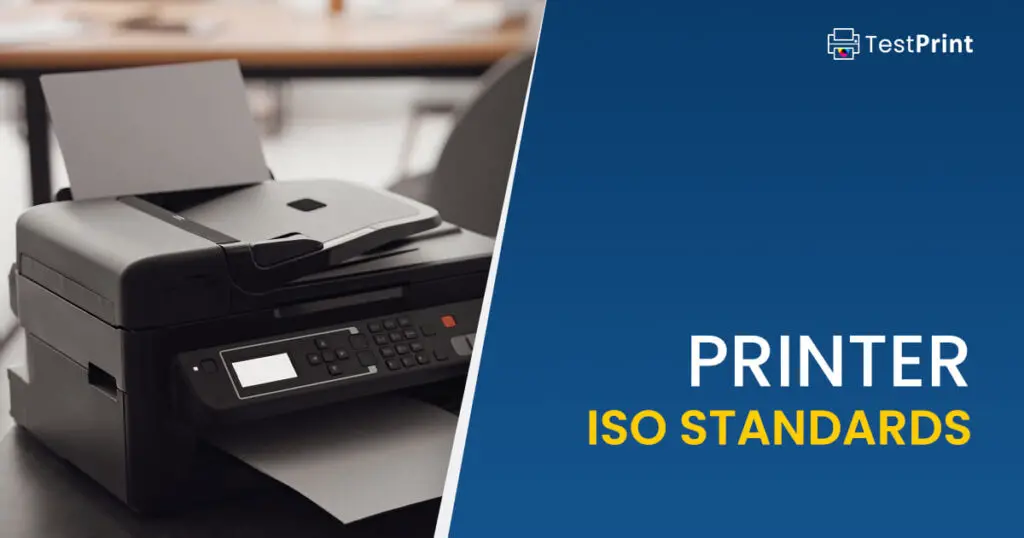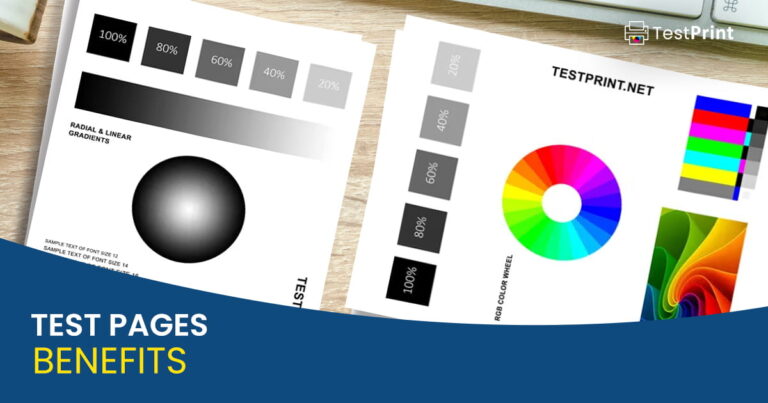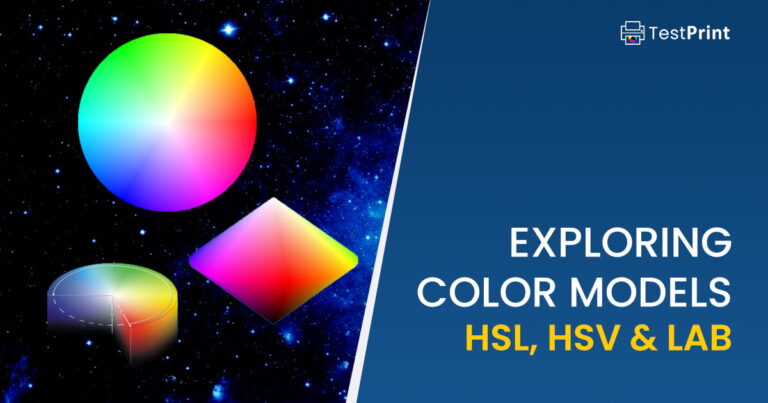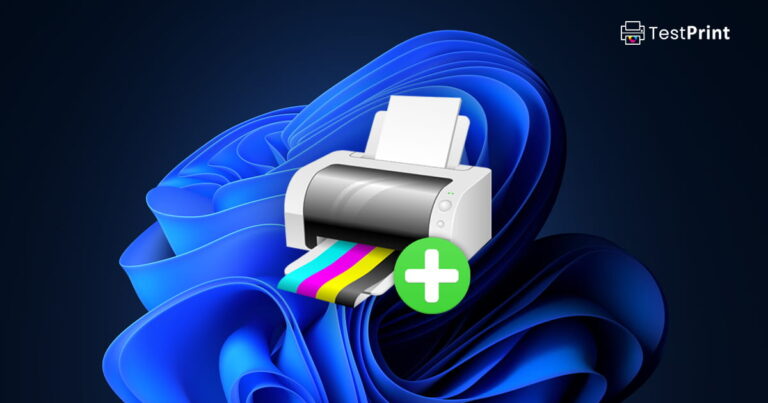When selecting a printer for your home or office, you always consider the printer’s specifications. The specifications include basic features, like color or monochrome printing, single-function or multifunction, and such. Apart from these, you also look at its print speed for color and monochrome, copying speed, print cycle, etc. These are all important factors in deciding which printer is the right one for you.
If you look closely, the technical specifications usually have a unit of measurement. For example, the print speed is either given in Pages Per Minute (PPM) or Images Per Minute (IPM). Additionally, printers have different print speeds for drafts and complex documents/images. These are all defined using ISO standards.
The printer manufacturers needed some kind of universal platform using which they can test their printers and deliver uniform results. This invoked the involvement of the International Organization of Standardization (ISO).
ISO is responsible for creating and maintaining standards globally to ensure that all standards are being met by different vendors and manufacturers. These standardizations bring accountability to the market and ensure the end-users that they are in safe hands. If a product or item is ISO-certified, it means that the manufacturer has met all conditions applied by the governing body (ISO).
That said, there are a bunch of ISO standards applied by the International Organization of Standardization on printers. It is only logical that all printer manufacturers have the same battleground to test their products.
Today, we are going to learn about the many different ISO standards defined for printers, and what each of them means.
ISO/IEC 19798:2017
The standard “ISO/IEC 19798” defines the method to determine the yield of a toner cartridge for colored printers. In simpler words, this standard defines how a printer manufacturer should test and measure its device’s toner yield, and the conditions it should be under.
Only after the printer is in those conditions will ISO certify the device as having the determined yield value.
Since ISO/IEC 19798 was last updated in 2017, all previous revisions of the standard have been withdrawn.
ISO/IEC 24734:2021
The ISO/IEC 24734 was last updated in 2021. This standard is specifically designed for consumer inkjet printers that define the method to measure print speeds. Any inkjet printer manufacturer must adhere to these standards before they can define the print speed of their device.
This standard covers all of the variables for consumer-based inkjet printers. May it be a single-function printer or an All-in-One printer; ISO/IEC 24734 has a uniform method to check your printer’s actual print speed, in color as well as black-and-white.
That said, this standard is applicable to devices that can print in A4 up to a size of 8.5″ x 11″. Anything smaller than the former or larger than the latter paper size does not fall into the ISO/IEC 24734 standard category.
ISO/IEC 24735:2021
The ISO/IEC 24735 is a standard to measure and determine the copying speed of a multifunctional or All-in-One printer. The devices must have an Automatic Document Feeder (ADF) for this standard to be implemented. It is designed for use with both color and black-and-white printers/copying devices.
For measuring the productivity of digital copying, ISO/IEC 24735 specifies the test files, test setup procedures, test runtime procedures, as well as reporting criteria. For every machine being tested, the test-system environment, operating modes, and print jobs are the same to provide them with a uniform testing field.
ISO 12647
ISO 12647 is a combination of sub-standards defined by the International Organization of Standardization for different printing processes. Each of the sub-standards is suffixed by a hyphen (-) followed by a number 1 through 9.
The ISO 12647 standard can be complicated as a whole, which is why it is split into many different parts and smaller standards:
- ISO 12647-1:2013: Describes the parameters and measurement methods for printing. Essentially 12647-1 provides the basis for the subsequent print-related settings.
- ISO 12647-2:2013: Defines the process control settings for offset lithography.
- ISO 12647-3:2013: Defines the process control settings for coldset offset lithography on newspaper printing.
- ISO 12647-4:2014: Defines the process control settings for publication gravure printing, which is used for high-volume magazines, catalogs, etc.
- ISO 12647-5:2015: Defines the process control settings for screen printing.
- ISO 12647-6:2020: Defines the process control settings for flexographic printing.
- ISO 12647-7:2016: Covers off-press proofing processes (hard-copy digital proof prints).
- ISO 12647-8:2021: Defines the requirements for determining the conformance of systems that produce a hard-copy validation print directly from digital data.
- ISO 12647-9:2021: Defines the requirements for systems that are used to produce offset prints for process color reproduction on metallic substrates.
IPM and PPM
As in the example we gave earlier, IPM and PPM are two acceptable standards for print speeds by the International Organization of Standardization. While the former informs the user of “Images per minute,” the latter tells them about the “Pages per minute” a printer is capable of printing.
Although both tell the speed of printing of a device, they are not interchangeable.
The standardized methods to measure the IPM for a printer is different than measuring its PPM.
Images Per Minute (IPM)
For colored printers, manufacturers tend to use IPM instead of PPM. Since the test to measure the IPM speed of a printer uses images as print samples, it is more accurate for the default speed rating.
For IPM readings, ISO provides 3 sets of documents with 4 pages each. A manufacturer must then use those documents and those documents only to determine its (average) print speed in IPM.
Pages Per Minute (PPM)
Unlike IPM, PPM is usually used to state the print speed for monochrome devices. The significant difference between the measuring techniques of IPM and PPM is that the tests performed to determine a printer’s speed in PPM do not require fixed resolutions or Dots Per Inch (DPI).
Additionally, a PPM reading can be obtained simply by printing a single page.
Other ISO Standards for Printers
Similar to the ones we have discussed above, there are many other ISO standards for printers and their testing. Here are a few which we thought are the most significant ones:
- ISO 2836:2021: Specifies the methods of assessing the resistance of printed materials to liquid and solid agents, solvents, varnishes, and acids.
- ISO 12635:2021: Specifies the width, length, and thickness of metal lithographic printing plates.
- ISO/TS 15311-2:2018: Provides guidance to print buyers and other users of print for assessing printed products on isotropic substrates that are typically held at a viewing distance of 30 to 50 cm.
- ISO/TS 18621-11:2022: Defines procedures to measure and compare the color gamuts of RGB and CMYK printing processes.
- ISO 21632:2018: Provides directions for measuring and calculating the electricity consumption of any format of digital production press.
- ISO 23498:2020: Specifies the method of measuring the visual opacity of printed specimens of white ink.
Takeaway
This article mentions many printer-related ISO standards that might be of use to you when making your next purchase. However, the list does not end here. There are still many ISO standards obligated onto printer manufacturers to which they comply.
That said, make sure to do your homework on your next printer before making a purchase, so that you know that the specifications are, in fact, what the labels say they are.





